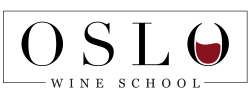This course is taught in English. Advanced wine course with interactive learning in small groups.
Do you work in a restaurant or hotel and your employer will pay for your course? Send us an email to arrange an invoice instead of paying through our website HERE to arrange an invoice instead of paying through our website
Are you passionate about wine and want to have even more knowledge about the world of wine? Or perhaps you are a Restaurant Manager, working for an importer or become a wine journalist? Then Level 3 in Wine is the right course for you. This demanding course is suitable for knowledgeable wine lovers as well as wine professionals who want more in-depth and breadth of knowledge of the world of wine.
Students should have completed WSET Level 2 in Wine or a Sommelier education before attempting WSET Level 3 in Wine.
After this course, you will feel confident navigating a wine list in a restaurant as well as choosing from Vinmonopolets selection. WSET Level 3 in Wine gives you sufficient knowledge to confidently begin collecting wines and understanding when these wines should be drunk.
Duration: In addition to the 33 hours of teaching and classroom sessions, students can expect that they will require 50+ hours of self-study.
Course Topics:
- Tasting Assessment: Describe the key characteristics of wines and use this description to make an assessment of quality and readiness to drink using the WSET Level 3 Systematic Approach to Tasting (SAT). How to make suitable wine recommendations
- Principals of viticulture: How viticulture influences the style, quality and price of wines.
- Anatomy of the vine, vine essentials for survival, the growth cycle, suitable climates for grape-growing and factors that influence regions.
- Effects of chosen vineyard site, vintage variation and soil. Managing the vines (pruning, trellissing and harvest), managing hazards, pests and diseases.
- Approaches to viticulture. Harvesting dates and sugar levels in grapes.
- Principals of winemaking: How winemaking choices influences the style, quality and price of wines.
- Fermentation vessels and winemaking processes, wine adjustments, making red, white, rosé and sweet wines. Blending, preparing wines for sale, types of packaging and closures
- The principal still wines of the world: Including
- France (Bordeaux, Dordogne and South West France, Burgundy, Beaujolais, Alsace, The Loire, The Rhone, Southern France)
- Germany (Mosel, Nahe, Rheingau, Rheinhessen, Pfalz, Baden, Franken)
- Austria (Neideröstereich, Burgenland)
- Hungary (Tokaj)
- Greece (Noussa, Nemea, Santorini)
- Italy (Trentino-Alto Adige, Fruili-Venezia Giulia, Veneto, Peimonte, Tuscany, Marche, Umbria, Lazio, Abruzzo, Campania, Puglia, Basilicata, Sicily)
- Spain (Rioja, Navarra, Calatayud, Carinena, Priorat, Catalunya, Penedes, Ribera del Duero, Toro, Rueda, Riax Baixas, Bierzo, Valanecia, Jumilla, Yecla, La Mancha, Valdepenas, Castilla y Leon)
- Portugal (Vinho Verde, Douro, Dao, Bairrada, Alentejo, Lisboa, Alentejano)
- USA (California - Napa in detail, Sonoma County, Russian River, Alexander Valley, Dry Creek Valley, Sonoma Coast, Mendocino County, Santa Cruz Mountains, Monterey, San Luis Obispo County, Paso Robles, Santa Barbara County, Santa Maria Valley, Lodi), Oregon, Washington, Finger Lakes
- Canada (Niagara Peninsula, Okanagan)
- Chile (Elqui, Limari, Casablanca, San Antonio, Leyda, Aconcagua, Cachapoal, Colchagua, Maipo, Curico, Maule)
- Argentina (Cafayate, Uco, Lujan de Cuyo, Maipu)
- South Africa (Stellenbosch, Paarl, Constantia, Durbanville, Swartland, Worcester, Robertson, Walker Bay, Hemel-en-Aarde, Elim, Elgin)
- Australia (South East Australia, Barossa, Eden, Clare, Adelaide Hills, McLaren Vale, Coonawarra, Yarra, Geelong, Mornington Peninsula, Heathcote, Goulbourn, Hunter valley, Tasmania, Margaret River, Great Southern)
- New Zealand (Gisbourne, Hawke´s Bay, Martinborough, Marlborough, Nelson, Canterbury, Central Otago)
- Principal grape varieties and factors that influence style, quality and price
- Cabernet Sauvignon, Cabernet Franc, Merlot, Sauvignon Blanc, Semillon, Muscadelle, Chardonnay, Pinot Noir, Riesling, Pinot Gris, Gewurztraminer, Muscat, Melon Blanc, Chenin Blanc, Sauvignon Blanc, Syrah, Viognier, Grenache, Carignan, Mourvedre, Gruner Veltliner, Pinot Grigio, Corvina, Garganega, Trebbiano, Nebbiolo, Dolcetto, Barbera, Cortese, Sangiovese, Montepulciano, Aglianico, Negroamaro, Primitivo, Nero d´Avola, Tempranillo, Graciano, Carinena, Verdejo, Albarino, Zinfandel, Malbec, Torrontes, Carmenere.
- Other grape varieties and factors that influence style, quality and price
- Petit Verdot, Tannat, Ugni Blanc, Pinot Blanc, Petit Manseng, Grolleau, Cinsault, Marsanne, Roussanne, Piquepoul, Silvaner, Müller-Thurgau, Dornfelder, Welschriesling, Blaufrankisch, Zweigelt, Saint Laurent, Furmint, Harslevelu, Sarga Muskotaly, Xinomavro, Agiorgitiko, Assyrtiko, Verdiccho, Grechetto, Trebbiano, Malvasia, Greco, Fiano, Mazuelo, Viura, Mencia, Monastrell, Airen, Alvarinho, Loureiro, Arinto, Touriga Nacional, Tinta Roriz, Alfrocheiro, Jaen, Baga, Trincadeira, Alicante Bouschet, Bonarda
- Wine laws: How key natural and human factors in addition to local laws and commerce influence the style, price and quality of wines related to EU wine laws and international wine laws
- Key factors in the production of wine: location, grape growing (viticulture), winemaking, maturation and bottling.
- Principal Sparkling wines of the world: Identify the key characteristics of the principal sparkling wines of the world, the winemaking processes, wine laws, factors that influence the style, quality, and price of these wines.
- Champagne, Cremant, Saumur, Vouvray, Cava, Prosecco, Sekt, Asti, Sparkling wines of Australia, New Zealand, South Africa and California
- Principal fortified wines of the world
- Port, Sherry and Fortified Muscats. Identify how these wine are made and the factors that influence the style, quality and price of these wines.
- Wine service: Describe wines to customers and reasons for selecting certain wines, correct procedures for storage and service of wines, how to identify common faults, principles of food and wine pairing, health issues related to excess consumption.
WSET Level 3 in Wine
- Kursformat: 6 full days
- Course dates: 20. January, 3.& 17. February, 3, 17 & 24 March
- Time: kl. 10:00 - 16:00
- Location The Tasting Room by Oslo Wine School, Elisenbergveien 10, 0265, Oslo
- Class size: max. 12 students per course to guarantee quality.
- This course is taught by one of Oslo Wine School´s WSET-approved wine educators.
Included in the course fee:
- WSET Level 3 in Wine course book and study guide (ie. it is NOT necessary to purchase this separately)
- All class tuition and revision materials
- Tasting approx. 30 - 35 wines
- Mock Exam for tasting and written exam
- Dropbox access to various learning aids
- Level 3 in Wine exam registration: Level 3 exam consists of a blind-tasting exam of 2 wines (30 minutes) and a written exam (2 hours) This exam must be taken in Oslo, Bergen or Tromsø. Level 3 in Wine exams are held in January/February and September/October each year so that students have sufficient time to study outside of the busy Horeca periods.
- On successfully passing the exam, students receive a WSET Level 3 in Wine certificate and pin.















